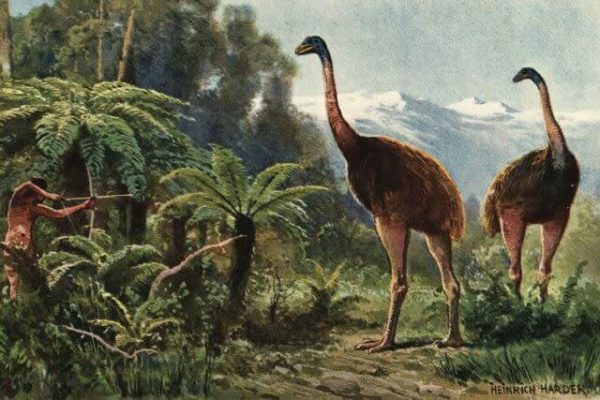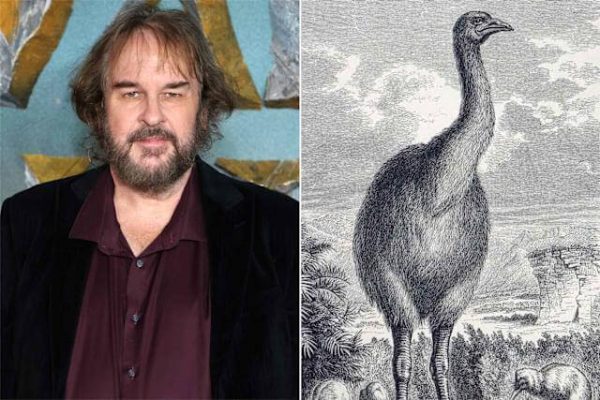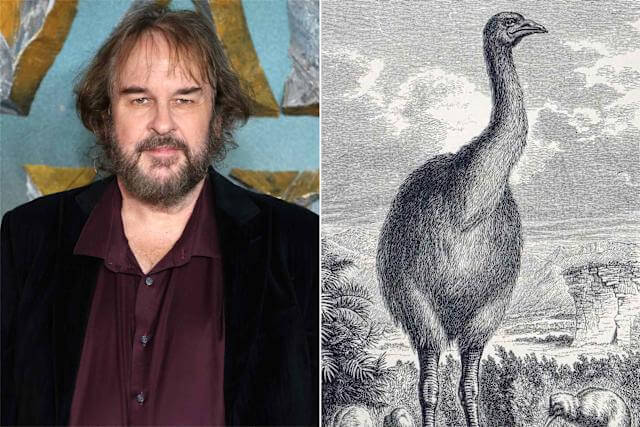world news
Peter Jackson’s Passion for Conservation: Efforts to Revive Extinct Birds and the Promise of De-Extinction
Introduction: A New Chapter for Peter Jackson
Peter Jackson, the visionary director behind The Lord of the Rings and The Hobbit trilogies, is known for his groundbreaking work in cinema, bringing epic stories to life with stunning visual effects and unparalleled storytelling. But Jackson’s interests extend far beyond filmmaking. In recent years, he has turned his attention to conservation and environmentalism, particularly the preservation and revival of endangered and extinct species.
One of the most fascinating and unexpected aspects of Jackson’s post-film career is his commitment to helping revive extinct species, specifically birds. His interest in de-extinction—the process of bringing back species that have disappeared from the planet—has caught the attention of environmentalists, scientists, and the public alike. Jackson has invested in projects aimed at reviving extinct bird species, particularly in his home country of New Zealand, where the impact of introduced predators and habitat loss has led to the extinction of several native birds.
This article will delve into Jackson’s passion for conservation, exploring the science behind de-extinction, the efforts to revive extinct birds, and the implications of such work. By examining Jackson’s personal involvement in these projects, we will gain insight into the broader environmental challenges and opportunities presented by the de-extinction movement.

The Science of De-Extinction: Reviving the Past for a Better Future
The concept of de-extinction may sound like something out of science fiction, but it is a rapidly evolving field of study that aims to bring back species that have gone extinct, using advanced biotechnology and genetic engineering techniques. Scientists are exploring various methods to resurrect species, such as cloning, gene editing, and selective breeding. While the idea of bringing back extinct animals has captured the imagination of many, it is not without controversy and challenges.
De-extinction relies heavily on understanding the genetic makeup of extinct species. By extracting DNA from preserved specimens, such as those found in museums, scientists can analyze the genetic material and attempt to recreate the extinct species. For some animals, like the woolly mammoth, scientists have made significant strides in using gene-editing technology like CRISPR to insert genes from extinct animals into the DNA of closely related species, such as elephants.
In the case of birds, de-extinction efforts are focused on species that have gone extinct in recent centuries, often due to human activity. In New Zealand, for example, the country’s unique birdlife has been devastated by the introduction of predators such as rats, stoats, and possums. The loss of these species has been profound, not only on the ecosystem but also in terms of cultural significance for the Māori people, who hold many of these birds in reverence.
Peter Jackson has partnered with conservationists and scientists to help bring back these extinct birds, such as the Moa and Haast’s Eagle, using cutting-edge technology to understand their genetics and find ways to bring them back into existence. Jackson’s involvement has helped raise awareness about these efforts and has provided funding for research in genetic engineering, an area that could change the way we think about conservation in the future.
Peter Jackson’s Personal Involvement in Conservation Projects
Peter Jackson’s commitment to environmental issues is not a fleeting interest. After finishing his work on The Hobbit trilogy, Jackson, along with his wife Fran Walsh, became more actively involved in conservation initiatives. Their focus has been on restoring native wildlife in New Zealand, where the couple has supported several projects designed to protect and revive the country’s endangered species. Jackson’s love for his home country and its unique biodiversity has led him to take a personal stake in the future of New Zealand’s wildlife.
One of the most notable projects that Jackson has been involved with is the Moa de-extinction effort. The Moa, a large flightless bird that once roamed New Zealand, became extinct in the late 1300s, largely due to overhunting by early Māori settlers. The revival of this iconic species could serve as a powerful symbol of conservation success and a reminder of the importance of protecting ecosystems before irreversible damage occurs.
Jackson’s efforts are also focused on protecting the Kiwi, another bird species native to New Zealand that is currently facing the threat of extinction. The Kiwi has become a national symbol of New Zealand, but the bird’s survival is in jeopardy due to the ongoing pressure from introduced predators and habitat destruction. Through his philanthropic work, Jackson has helped fund efforts to establish predator-free zones and has been instrumental in supporting breeding programs to help boost the population of Kiwi birds in the wild.
Jackson has not only provided funding for these initiatives but also used his platform as a renowned filmmaker to raise awareness of the environmental crises facing New Zealand’s wildlife. Through his involvement in conservation, he has demonstrated how celebrities and public figures can leverage their influence for positive change.

The Revival of Extinct Birds: Success Stories and Challenges
Reviving extinct species, particularly birds, is an ambitious and complex endeavor that requires significant scientific research, collaboration, and funding. While de-extinction efforts have shown promise in certain areas, they are far from perfect and come with a range of challenges that need to be addressed.
One of the most well-known examples of a successful conservation effort is the California Condor, a bird that was once on the brink of extinction but has seen a successful revival thanks to captive breeding programs and careful management. While the California Condor is not extinct in the technical sense, it serves as a model for the potential of human intervention in saving species from the brink.
The situation is more complex for extinct species like the Moa or Haast’s Eagle, where the species has not existed for centuries. For these birds, the process of de-extinction is much more challenging. Scientists are attempting to recover the genetic material necessary to bring back these species, but the lack of preserved DNA and the ethical considerations surrounding the process are significant obstacles.
Jackson’s focus on the Moa and similar birds is part of a broader effort to develop methods for reintroducing species into ecosystems that have been drastically altered. This includes ensuring that the revived species can thrive in a world that has changed since their extinction. For example, the absence of predators that once kept species in balance or the availability of suitable habitats could pose serious challenges for revived species.
Nonetheless, the efforts being made today, with the help of advanced genetic techniques and the funding of passionate individuals like Peter Jackson, are creating new opportunities to learn about the potential for de-extinction and the role it could play in modern conservation efforts. While much of this science is still in its early stages, it offers hope that extinct species might one day be revived and returned to their natural habitats.
The Ethical Implications of De-Extinction and Conservation Efforts
As exciting as the possibility of reviving extinct species may be, it raises several ethical questions about the role of humans in the natural world. The de-extinction movement has sparked debates over whether we should be attempting to bring back species that have disappeared or whether we should focus our efforts on protecting the species that still exist today.
One of the main ethical concerns is the impact that reintroducing extinct species could have on existing ecosystems. While the idea of reintroducing the Moa to New Zealand is an exciting prospect, scientists must consider how this species would interact with the current environment, which has evolved in the absence of the Moa for hundreds of years. The introduction of a revived species could have unforeseen consequences on food chains, plant life, and other wildlife.
Moreover, there is the ethical question of whether de-extinction is the best use of resources. Given the countless species that are currently on the brink of extinction, some argue that efforts should be focused on preventing current extinctions rather than attempting to reverse the past. Conservation funds, they argue, could be better spent on protecting ecosystems and endangered species that still have a chance of survival.
Despite these concerns, many scientists and conservationists believe that de-extinction efforts, when approached responsibly, could be a valuable tool for restoring lost biodiversity. By reviving certain species, scientists may be able to restore balance to ecosystems and help undo some of the damage caused by human activity. However, these efforts must be undertaken with caution, considering the long-term impact on the planet’s ecosystems.
Conclusion: A Vision for the Future of Conservation
Peter Jackson’s commitment to the revival of extinct birds and his support for conservation efforts highlight the important role that individuals can play in addressing the environmental challenges of our time. His involvement in the de-extinction movement, particularly in New Zealand, offers hope that science, technology, and public engagement can work together to bring back species that were once lost to the world.
While the science of de-extinction is still in its infancy, the possibilities it presents for reversing the damage done by human activity are inspiring. As we continue to grapple with the challenges of climate change, habitat loss, and the extinction of species, Jackson’s efforts remind us of the power of innovation and the importance of protecting the biodiversity that still exists.
Whether or not we see a Moa roaming the plains of New Zealand again, Jackson’s vision for conservation and his commitment to preserving the natural world will likely continue to influence the future of environmentalism for years to come. Through his work, he is not just reviving birds, but also igniting a global conversation about the future of our planet and the species we share it with.
From lydiancustomtee

